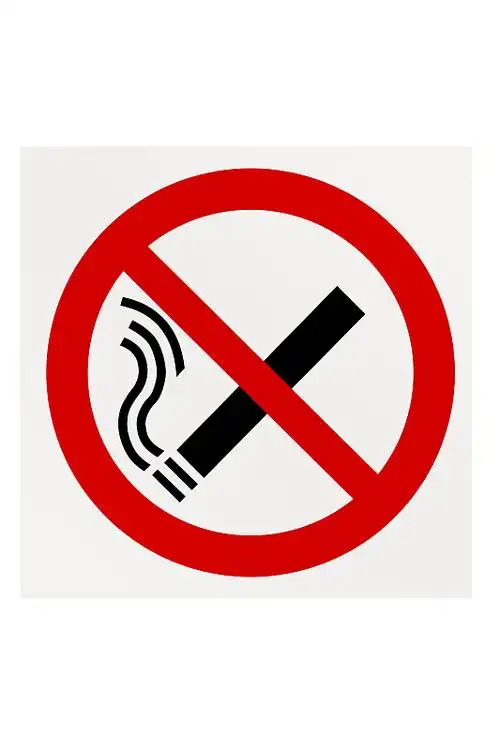Title: Unraveling the Connection: How Tobacco Use Elevates Levothyroxine Dosing Needs
The intricate dance of hormones within the human body is a delicate balance, easily perturbed by external factors. For millions of individuals worldwide living with hypothyroidism, the synthetic thyroid hormone levothyroxine is a lifeline, meticulously dosed to restore metabolic equilibrium. However, a significant and often underappreciated variable in this delicate titration process is tobacco use. A growing body of clinical evidence underscores a clear and consequential link: tobacco smoking significantly increases the dose requirements of levothyroxine. This relationship is not merely anecdotal but is rooted in a complex interplay of pharmacokinetics, pharmacodynamics, and the potent chemical cocktail present in tobacco smoke.
The Thyroid Gland and Its Synthetic Substitute
To comprehend this interaction, one must first understand the thyroid's role. The butterfly-shaped gland in the neck produces two primary hormones: thyroxine (T4) and triiodothyronine (T3). T4 is largely a prohormone, converted into the more biologically active T3 in peripheral tissues. Hypothyroidism, characterized by an underactive gland, leads to symptoms like fatigue, weight gain, depression, and cold intolerance. Levothyroxine is a synthetic form of T4, designed to replace the missing hormone. Its dosing is highly individualized, starting low and gradually increasing based on regular monitoring of Thyroid-Stimulating Hormone (TSH) levels—the pituitary gland's signal that dictates thyroid hormone production. The goal is to find the precise dose that normalizes TSH, indicating a euthyroid, or balanced, state.
The Chemical Culprits: Nicotine and Beyond
Tobacco smoke is a complex mixture of over 7,000 chemicals, including nicotine, tar, carbon monoxide, and numerous polycyclic aromatic hydrocarbons (PAHs). While nicotine is the primary addictive substance, the impact on thyroid function and levothyroxine metabolism is attributed to a broader spectrum of components.
The primary mechanisms through which tobacco influences levothyroxine requirements are multifaceted:
-
Enhanced Hepatic Metabolism: The liver is a crucial organ for the metabolism of thyroid hormones. Tobacco smoke, particularly its PAH components, is a potent inducer of hepatic enzyme systems, specifically the cytochrome P450 family (e.g., CYP1A1, CYP1A2). These enzymes are responsible for the detoxification and breakdown of numerous substances, including thyroid hormones. By upregulating these enzymatic pathways, smoking accelerates the deiodination and glucuronidation of both endogenous thyroid hormones and exogenous levothyroxine. This increased metabolic clearance means the drug is broken down and eliminated from the body more rapidly, reducing its bioavailability and therapeutic efficacy.
-
Altered Gastrointestinal Absorption: The absorption of orally administered levothyroxine is a critical and often fragile process, occurring primarily in the jejunum and ileum. It is notoriously susceptible to interference from food, coffee, calcium, and iron supplements. Evidence suggests that smoking can influence gut motility and blood flow. Nicotine, a stimulant, can accelerate intestinal transit time, potentially reducing the window for optimal levothyroxine absorption. Furthermore, the vasoconstrictive effects of nicotine may alter splanchnic blood flow, further complicating the absorption dynamics. While this mechanism is less dominant than hepatic induction, it contributes to the overall reduction in effective drug delivery.
-
Impact on the Hypothalamic-Pituitary-Thyroid (HPT) Axis: Smoking has direct effects on the neuroendocrine system governing thyroid function. Studies have shown that smokers often have slightly lower serum TSH levels compared to non-smokers, and may have higher circulating T3 and free T4 levels. This suggests that components of tobacco smoke can stimulate the thyroid gland directly or alter the set-point of the HPT axis. This creates a confusing clinical picture: a smoker might have a seemingly "normal" or low TSH while still being symptomatic because their body is clearing the hormone too quickly. The exogenous levothyroxine is essentially being burned through at an accelerated rate to meet this altered metabolic demand.

Clinical Evidence and Dosing Implications
The clinical reality of this interaction is stark. Multiple studies have demonstrated that smokers with hypothyroidism require significantly higher doses of levothyroxine—often 20-30% more—to achieve TSH levels within the target range compared to their non-smoking counterparts. For instance, a patient who might be stable on 100 mcg per day as a non-smoker could require 120-125 mcg per day after initiating smoking.
This has profound implications for patient management:
- At Initiation of Therapy: A clinician taking a history from a new hypothyroid patient must actively inquire about smoking status (including vaping and smokeless tobacco, though data is less robust). A smoker may need a higher starting dose.
- During Titration: Dose increases may need to be more aggressive in smokers to achieve euthyroidism.
- Upon Cessation: This is perhaps the most critical scenario. When a patient successfully quits smoking, the inducing effect on liver enzymes gradually wanes over weeks to months. If their levothyroxine dose is not concomitantly reduced, they are at a high risk of iatrogenic thyrotoxicosis. Symptoms of overdose include palpitations, anxiety, insomnia, tremors, and excessive weight loss. Therefore, smoking cessation must be followed by close monitoring of TSH levels and a proactive plan to down-titrate the levothyroxine dose to prevent adverse effects.
Beyond Dose: Other Thyroid Considerations
The conversation extends beyond just levothyroxine dosing. Smoking is a well-established risk factor for the development and progression of Graves' disease and especially Graves' ophthalmopathy. It can also influence the presentation of thyroid nodules and may modulate autoimmune processes underlying Hashimoto's thyroiditis, the most common cause of hypothyroidism in iodine-sufficient regions.
Conclusion and Patient Counseling
The message for healthcare providers and patients is unequivocal: tobacco use is a major modifier of levothyroxine therapy. It necessitates higher doses, increases the risk of instability, and mandates careful management during lifestyle changes. Patient education is paramount. Individuals taking levothyroxine must be informed that smoking undermines the efficacy of their medication, potentially perpetuating symptoms of hypothyroidism like fatigue despite treatment. Framing smoking cessation not just as a general health goal, but as a specific step to optimize their thyroid treatment and potentially lower their medication dose, can provide a powerful and personalized motivation to quit.
Ultimately, managing hypothyroidism in a smoker requires vigilance, anticipation, and a holistic approach that considers lifestyle a key determinant of pharmaceutical efficacy. Recognizing the smoke-thyroid axis is essential for achieving true metabolic balance and safeguarding patient well-being.










